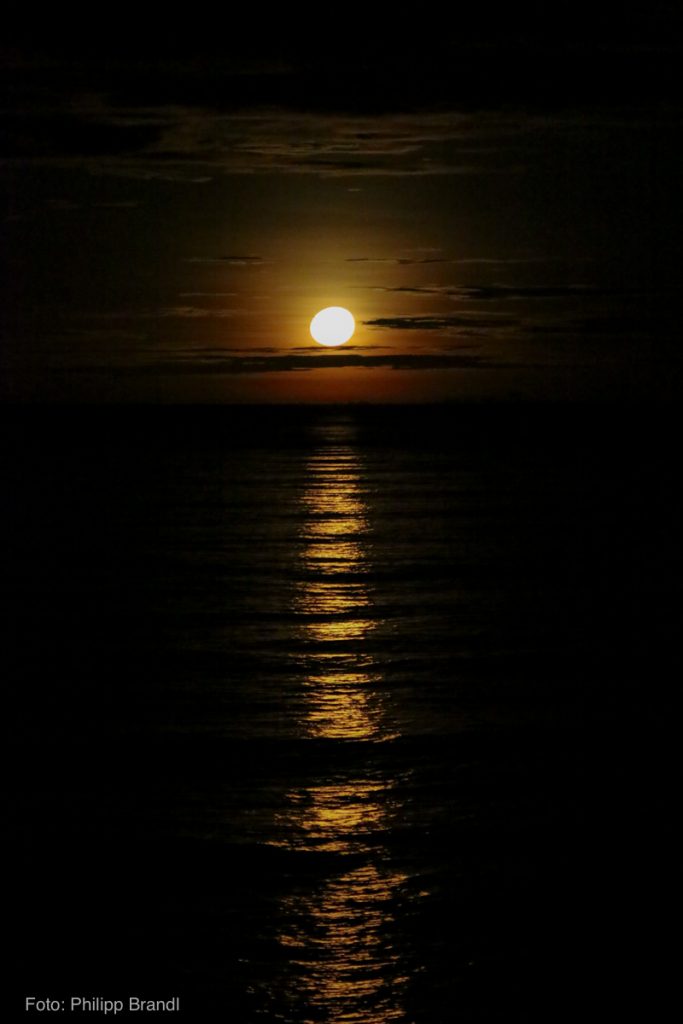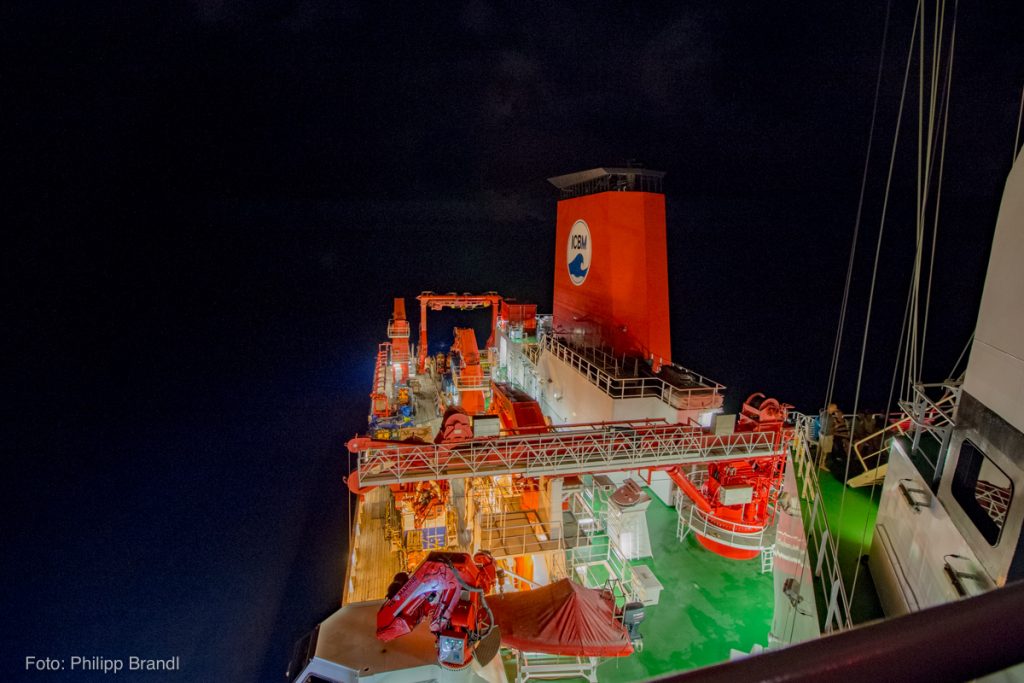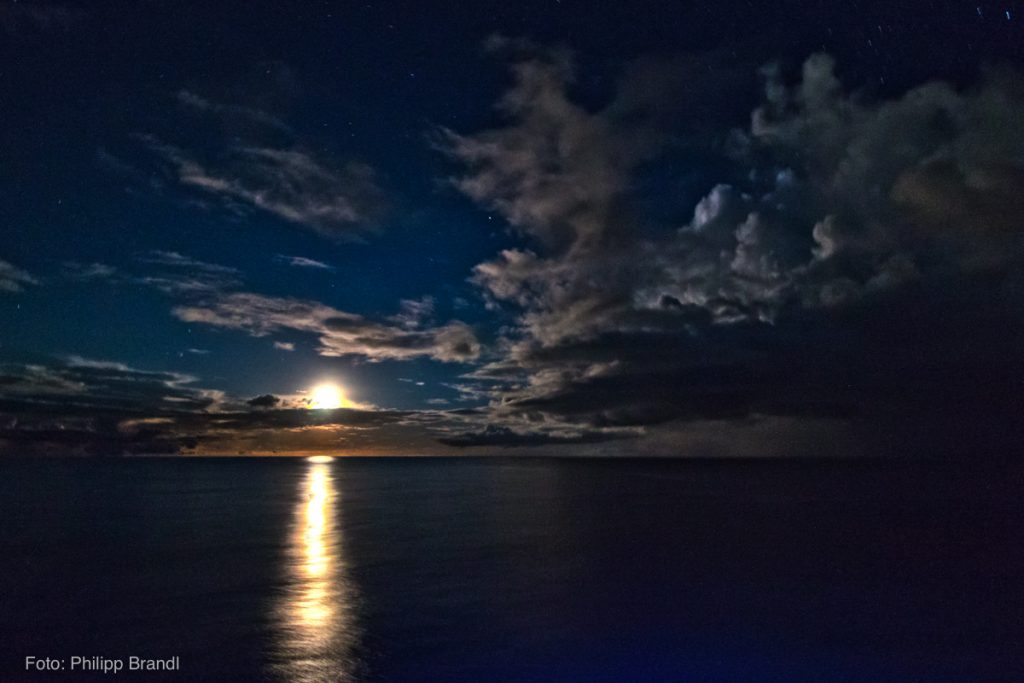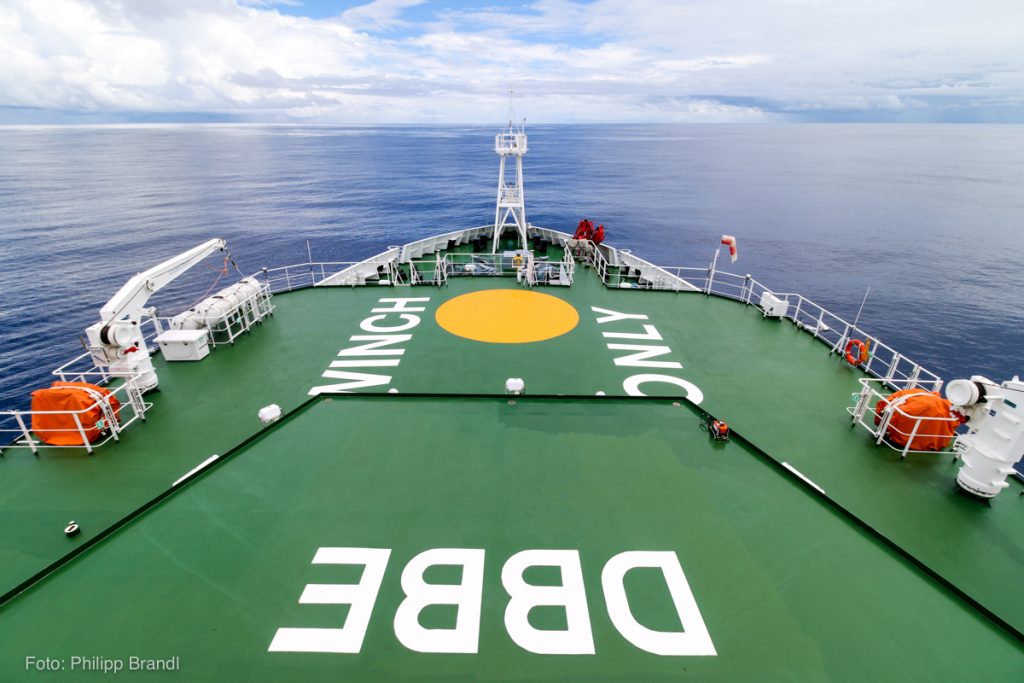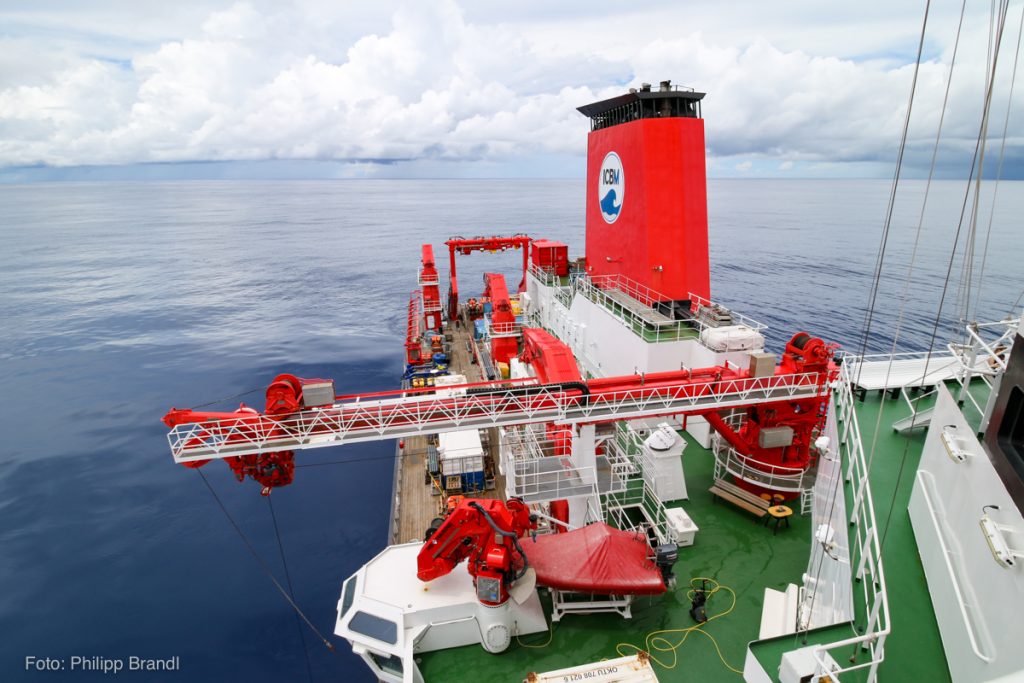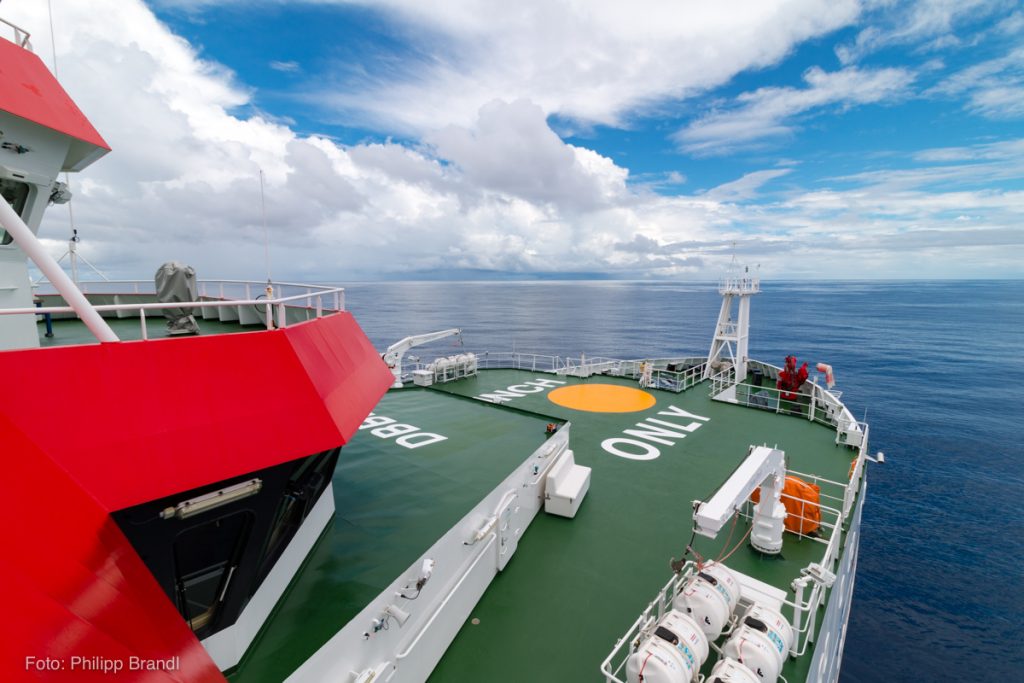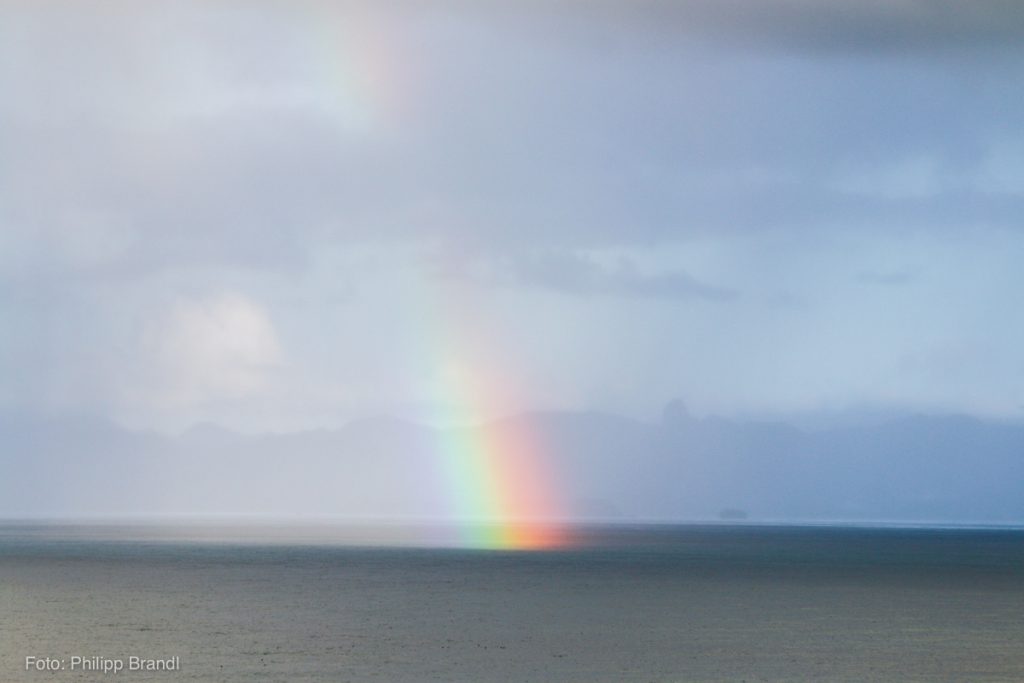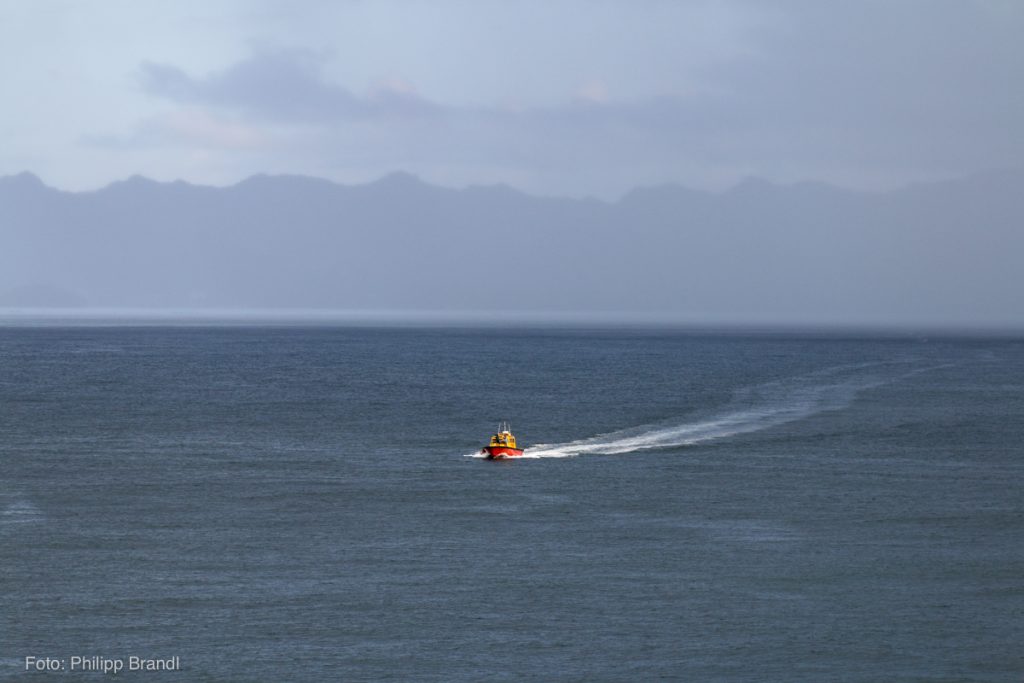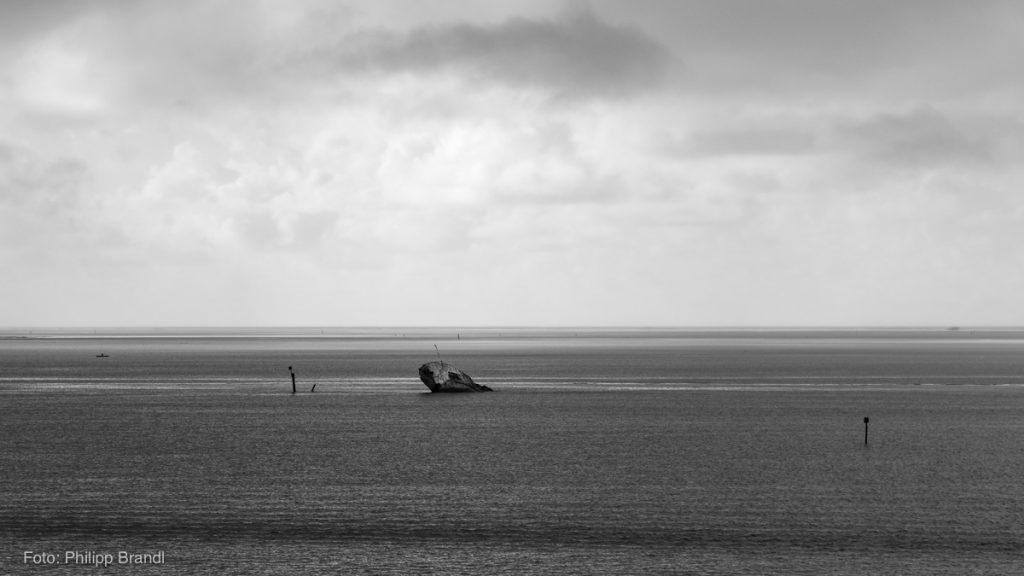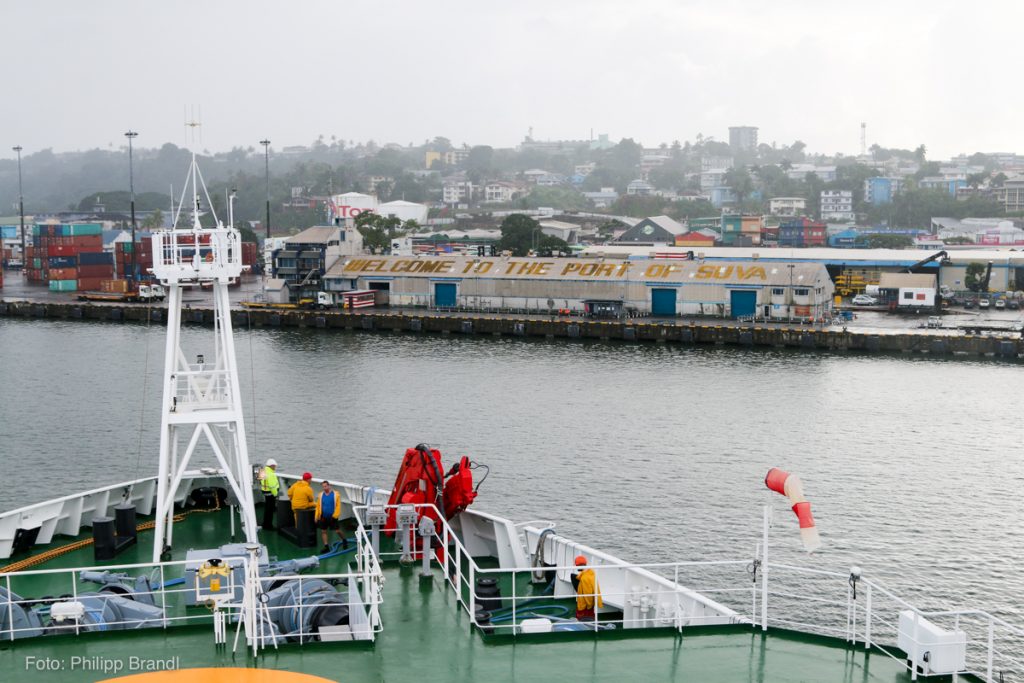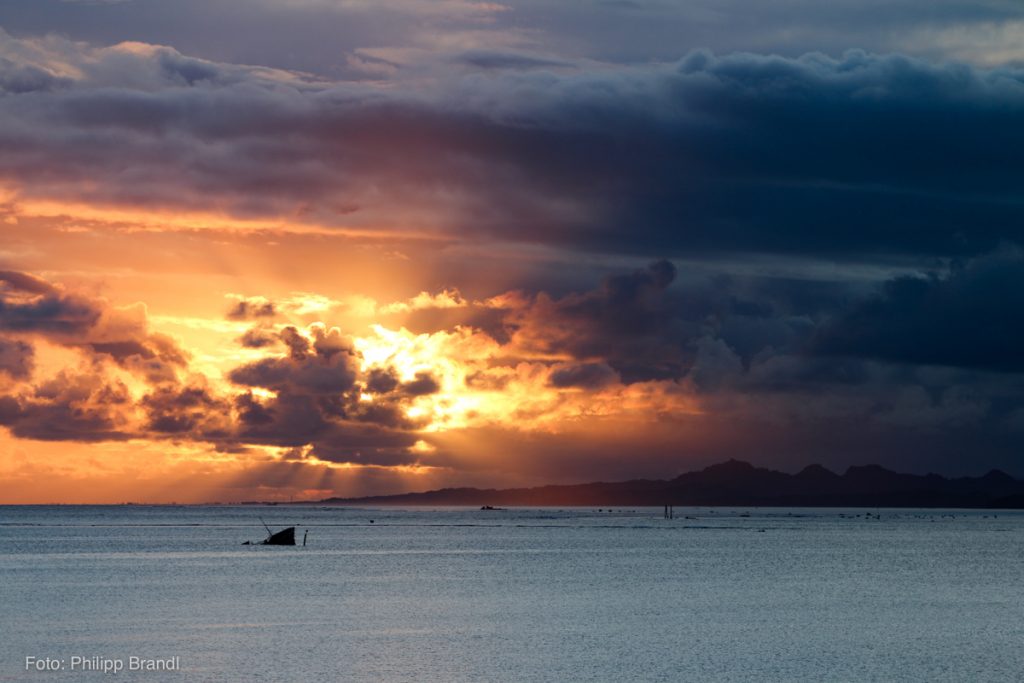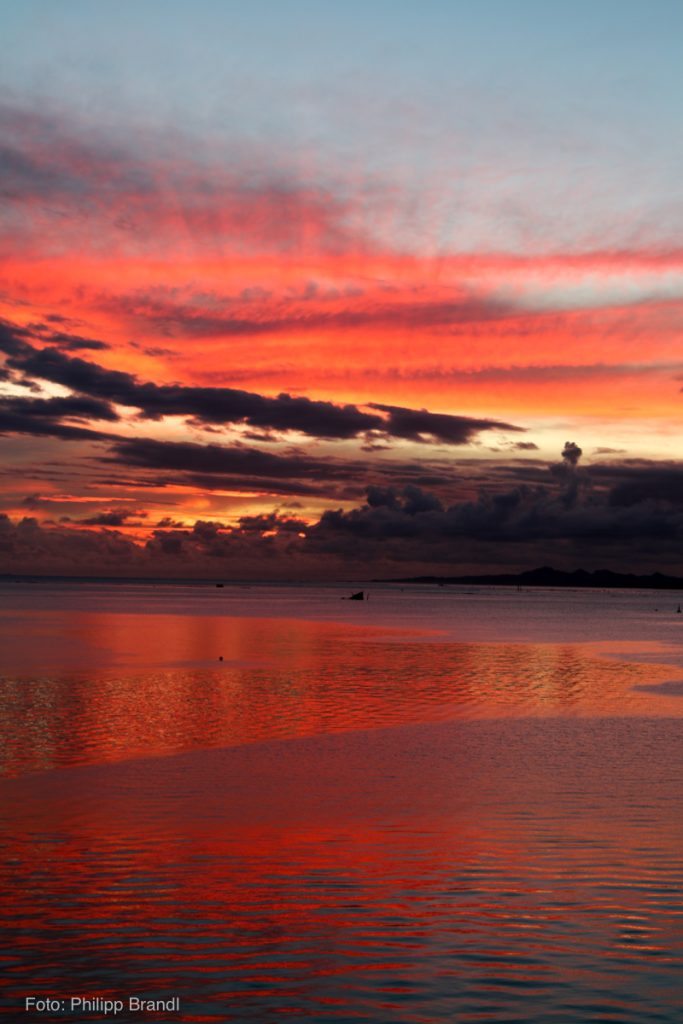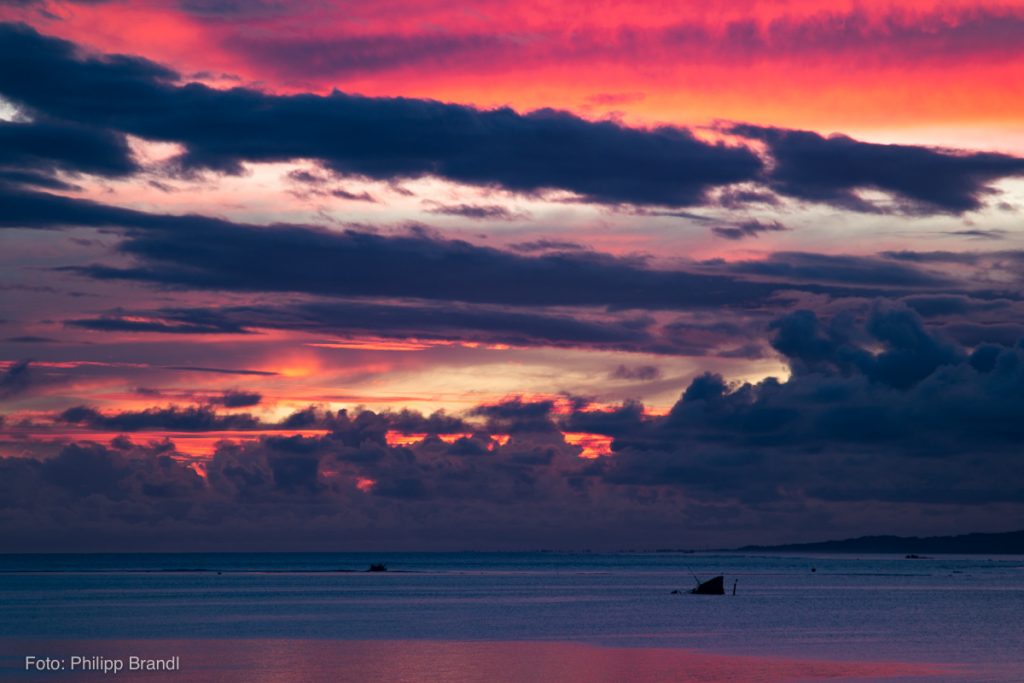+++ Für die deutsche Version bitte nach unten scrollen +++
All good things come to an end and so is the Archimedes-I cruise. For 48 days, 39 scientists and 31 crew members were onboard of the RV Sonne, cruising the Lau Basin in the south-west Pacific. The cruise was one of a kind because in contrast with other large cruises where many different disciplines work on a variety of scientific topics, the Archimedes-I cruise combined forces by integrating various techniques to investigate one overarching question: ‘What processes drive crustal growth in the intra-oceanic domain?’.
To answer that question we acquired 46.600 km2 of bathymetry, magnetics and gravity data. This is the equivalent of 7% of the Tongan land and sea surface, which is quite an impressive number! We dredged 41 stations and recovered a nice assembly of rock types from an arc-back-arc domain. The Automated Underwater Vehicle (AUV) did 8 dives for high resolution mapping. We acquired 960 kilometers of reflection seismic data with a 4 km long streamer and we deployed 130 OBS stations along three profiles with a total length of 630 km and, very important, a 100% recovery rate. Heat flow and gravity coring was attempted and even though it was more difficult than anticipated to break through the top layer of volcanoclastic rocks, we managed to add some more datapoints to this area.
We have been extremely lucky with the weather. There was only one day where we couldn’t work, because of some tropical cyclones that were passing through the region. Besides the good weather, we could not have acquired this vast amount of data without the many people with different disciplines who worked together to make this happen. This is not an easy task, but throughout the cruise the spirits were high and this added for sure to the productiveness of the cruise.
Apart from the collaborative scientists, we could not have performed so well without the skilled crew of the RV Sonne. The OBSes would still be floating around and the dredges full of rocks would have never made it to the deck without ‘die mannschaft’. Come to think of it, we would have never left the harbour without them. A very big ‘thank you’ to the crew is in place here.
Since this is the last blog entry of a series of blogposts on the Archimedes-I cruise, the circle of our voyage would not be complete without some anecdote about our return to the harbour. I’ve written about lost luggages, packing the ship and leaving the harbour, about how to stay fit onboard, about superstitiousness at sea and about women roaming the oceans. Like always at sea, life is a bit unsure and the schedule can change in no-time. As I am writing this, we are in transit to the port of Suva, Fiji. We are not sure yet if we will have a place in the harbour, maybe we will lay at anchor for some time. There is also some excitement going on with the containers in which we store our equipment, because some of them have not yet arrived. This cruise has been full of unforeseen challenges, but we have dealt with them all. So the only thing left to do is hope that these containers arrive and we can go into port. And even if this doesn’t work out as scheduled, tomorrow we will see some land, at last.
Many thanks for following this blog and keep the wind in your sails!
Die Archimedes-I zurück im Hafen
Alles Gute hat ein Ende und so auch die Archimedes-I Ausfahrt. Für 48 Tage waren 39 Wissenschaftler und 31 Leute Schiffsmannschaft an Bord der FS Sonne und düsten über den Südwest-Pazifik. Die Ausfahrt war einzigartig, weil nicht nur viele Wissenschaftler aus verschiedenen Fachbereichen beteiligt waren, sondern Sie auch gemeinsam an einer großen Fragestellung geforscht haben. Die Fragestellung lautete: “Welche Prozesse treiben das Wachstum von Kruste im intra-ozeanischen Milieu an?“.
Um diese Frage zu beantworten wurden insgesamt 46.600 km2 Bathymetrie, Magnetik und Schweredaten gesammelt. Diese Fläche entspricht ungefähr 7% von Tongas Meeres und Landfläche zusammen! Zusätzlich hatte das Automated Underwater Vehicle (AUV) acht Tauchgänge während denen es weitere höher auflösende Bathymetrie Daten gesammelt hat. Wir haben an 41 Lokationen gedredged und eine schöne Spannbreite an Gesteinen geborgen. Weiterhin wurden 1065 km Reflektionsseismik Daten gesammelt mit einem 4 km langen Streamer und zusätzlich 130 OBS Stationen ausgesetzt (und alle wieder geborgen) entlang von 3 Profilen mit einer Länge von insgesamt 630 km. Da die Geräte nur schwer in die oberste Schicht an Vulkaniklastika eindrangen, waren Wärmefluss und Schwerelot nur eingeschränkt erfolgreich.
Wir hatten unglaubliches Glück mit dem Wetter. Es gab nur einen Tag an dem wir wegen auf einander folgenden Zyklonen nicht arbeiten konnten. Ohne dieses Glück, hätten wir es nie geschafft so eine Masse an Daten zu sammeln. Genauso essentiell war auch die gute Zusammenarbeit zwischen den verschiedenen Fachgruppen, die nicht nur eine Koordination des Fahrtprogramms vereinfachte sondern auch die Stimmung und Produktivität hoch hielt.
Genauso wichtig wie die gute Zusammenarbeit zwischen den wissenschaftlichen Fachgruppen war auch die mit der Schiffsmannschaft. Ohne diese würden die OBS Stationen noch im Pazifik treiben und die Dredgen hätten nie ihren Weg an Deck gefunden und wenn ich so drüber nachdenke, hätten wir ohne die Mannschaft nicht einmal den Hafen verlassen. An dieser Stelle ist also ein riesiges Dankeschön angebracht!
Bis jetzt habe ich schon über verlorene Gepäckstücke, Beladen des Schiffes, das Auslaufen aus dem Hafen, Sport an Bord, Seemännischen Aberglaube und über Frauen die die Ozeane besegelten geschrieben. Weil dieser Blog der letzte dieser Serie sein wird, wäre er nicht komplett ohne eine Anekdote über die Rückkehr in den Hafen.
Auf See können sich Pläne so schnell ändern wie das Wetter, weswegen eine gute Portion Flexibilität zu empfehlen ist. Während ich das hier schreibe sind wir gerade auf dem Weg in den Hafen von Suva, noch ist unklar ob wir einen Hafenplatz haben oder auf Anker stehen müssen. Ebenfalls unklar ist es, ob alle Container, in denen wir später unsere Geräte laden bereits eingetroffen sind. So eine Ausfahrt ist eben verbunden mit vielen unerwarteten Herausforderungen und die hören nicht vor dem Einlaufen in den Hafen auf. Die Ausfahrt war durchzogen von unvorhersehbaren Herausforderungen, aber wir sind noch an keiner gescheitert und bleiben auch bei dieser letzten optimistisch und voller Vorfreude darauf endlich wieder Land zu sehen.
Danke dass ihr diesen Blog verfolgt habt und bis zum nächsten Mal!
Written by/verfasst von: Anouk Beniest
Translated by/ins Deutsche von: Anna Jegen
Edits/Fotos: Philipp Brandl
